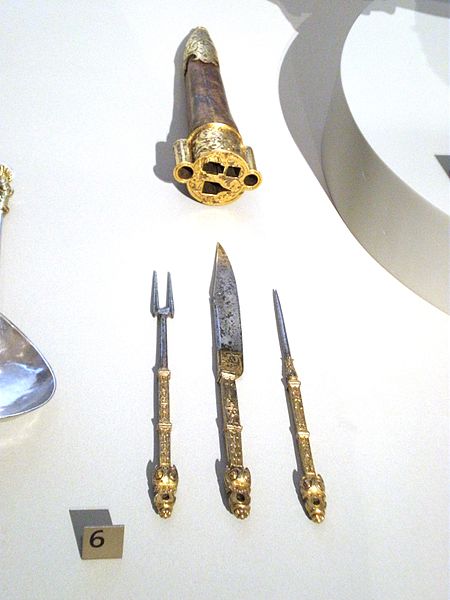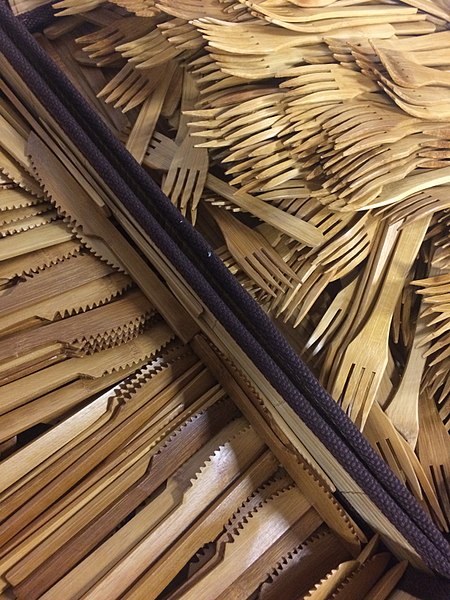Tableware items are the dishware and utensils used for setting a table, serving food, and dining. The term includes cutlery, glassware, serving dishes, serving utensils, and other items used for practical as well as decorative purposes. The quality, nature, variety and number of objects varies according to culture, religion, number of diners, cuisine and occasion. For example, Middle Eastern, Indian or Polynesian food culture and cuisine sometimes limits tableware to serving dishes, using bread or leaves as individual plates, and not infrequently without use of cutlery. Special occasions are usually reflected in higher quality tableware.
Formal dining table laid for a large private dinner party at Chatsworth House
Table laid for six at the Royal Castle, Warsaw, (18th–19th century fashion)
Historic pewter, faience and glass tableware
Food served on a banana leaf in Karnataka, India
Cutlery includes any hand implement used in preparing, serving, and especially eating food in Western culture. A person who makes or sells cutlery is called a cutler. The city of Sheffield in England has been famous for the production of cutlery since the 17th century and a train – the Master Cutler – running from Sheffield to London was named after the industry. Bringing affordable cutlery to the masses, stainless steel was developed in Sheffield in the early 20th century.
French travelling set of cutlery, 1550–1600, Victoria and Albert Museum
An example of modern cutlery, design by architect and product designer Zaha Hadid (2007).
A set (known as a canteen) of Georgian era silver cutlery, including ladles, and serving spoons. The thin item on the left is a marrow scoop for eating bone marrow.
Bamboo cutlery








